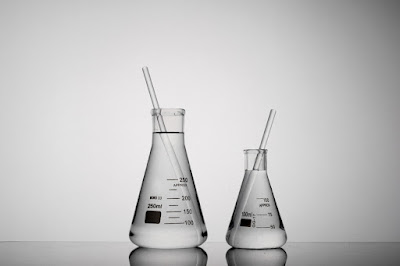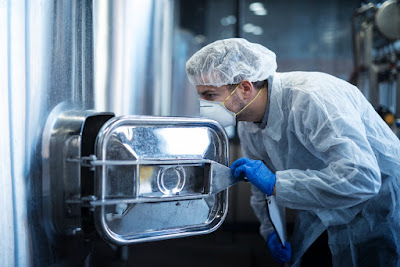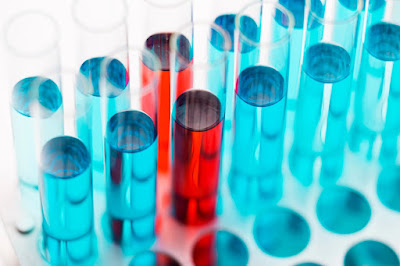What Is the Role of Analytical Reference Standards in the Analysis of Sample in Quality Control Laboratory?
In this blog, we are going to discuss what's actually going to do in the quality control lab and what kind of analysis is possible? And during analysis why standards are required? What kind of standards you can employ between the analysis?
Before diving into deep discussion, the first
thing you should know is the type of analysis commonly performed in the quality
control laboratory.
Type Of Analysis in The Quality Control Laboratory
There are two kinds of analysis
·
Qualitative analysis
·
Quantitative analysis
Qualitative Analysis
Quality analysis when you are characterizing the physical
properties of the material or substance. It means you are doing the description
test. You are checking the solubility of the material substance. You are
identifying the metals by spectroscopy or
HPLC. Here you will not get any measurement values.
Quantitative Analysis
In a quantitative analysis, you will get measurement
values like percentage of water content in a substance, measurement of required
chemical for a reaction or level of reaction caused by a specific chemical, etc.
When you are performing qualitative and quantitative analysis, what actually are doing you? In most cases, you are actually
compressing between your known sample and the unknown sample.
Usage of Analytical Reference Standards in Analysis
There is an external standard method and an internal standard
method.
In the external standard method, you will prepare one
standard solution and you will prepare one sample solution, and then you compare
the response from the standard versus sample.
While the internal standard method means that is, you need
to add an equal amount of internal standard to the sample as well as a standard
solution. So, there's something you need to remember that internal standard should
not react to analyte molecules, it should be stable and it should not have the
impurity with the same as the analyte molecules. So, how do you define the concentration in the case of
internal standards? By comparing ratios of their peak areas or peak heights and
the internal standard in the sample solution with the ratios of the peak area
or peak height in the internal standard of the standard solution.

What is Analytical Standard?
The analytical standard is the substance or material you
used to evaluate or characterize the sample means it may be raw material.
It may be a process
sample. It may be an API sample or a maybe finish to order products. These substances
are used to evaluate or characterize a sample.
There are reference standards, inhouse standards, working
standards, impurity standards.
Reference standards are readily available for use,
offered by official pharmacopeial agencies, and can be used without any kind
of evaluation. Okay, So, these are called reference standards.
Inhouse standard: when the desired reference
standards are not available in the market. Then in that case you have to
characterize or prepare the standard in your house. But you have
to remember three things. It should be highly characterized, highly
characterized in the sense of structural, molecular, and functional
identity should be established, it will be accepted and without further evaluation,
it can be used. For structural you should have the NMR data, for molecule you
should have the mass spectroscopy data of that particular molecule, and for
functional, you should have the spectroscopic data.
Working standard: substance and material that is
being evaluated against the in-house standard or reference standard and you can
use it for daily routine laboratory analysis.
Impurity standard: we can get this during chemical synthesis
or it is also commercially available offered by official pharmacopeial agencies.
This substance or material is used to identify and quantify the impurity is of a
particular molecular substance. It can also be used without further evaluation.

How to Handle these Analytical Reference Standards?
There are three areas you generally need to look at during
the handling of the standards because these standards are very precious and
costly so you need to handle them carefully. These three areas include
environment, cross-contamination, and the minimum usage of the standards.
Environment
You need to maintain a proper and suitable environment because
materials are light-sensitive or moisture-sensitive. So, you need to store it
accordingly whatever the recommended storage,
or packing conditions. Furthermore, before using the analytical standard you
need to get written the ambient temperature. Suppose you are storing your
standard at managed temperature. To use this standard, you have to get
it back to maybe room temperature or whatever temperature it will.
Secondly, suppose you are taking your standard from the deep
freezer condition to your room temperate conditions, there will be a
temperature difference. And because of the temperature differences, there
might be chances of vapor accumulation outside the container.
So, in that case, what you have to do you have to use them
properly wipeout out those vapors with the help of a tissue paper cloth or
something. So, that moisture would not get inside the standard. And after every
use, as the minimum possible time, you should keep the standards to back its
actual storage conditions to avoid the exposure of external temperatures. When
you are trying to dry the material, you should use the portions of the
standards and put it in a pet or any appropriate container. And don't put the
actual container open where you’re working with the standard. So, these are the
major things you need to take labor as per the environment.
Cross-Contamination
When you are comparing unknown samples with these standards.
You have to be very careful about cross-contamination. If any
cross-contamination occurs, your analysis can go in the wrong direction. So, we
have to be very careful while handling. As a precaution, always use hand gloves
to avoid exposure to your hand or sweat of your hand to the materials, Furthermore, do not
put back any excess quantity. Suppose you have taken the 1 gram of a standard
for your analysis and after completion of analysis. Whatever is left, if you
add that chemical to the original container, it will contaminate your standard
and won’t be able to use in the future.
Usage of Minimum Quantity
As these standards are very much costly So you have to be
very much careful while handling
these analytical standards. Suppose in your specification and method it is
briefed that you have to prepare a 1% solution under. Suppose in your
specification and method id saying that you have to prepare the 1% solution of
100 ml. But if you feel obtainable of working standard preparation, it can be
enough to complete your analytical activity.





Comments
Post a Comment